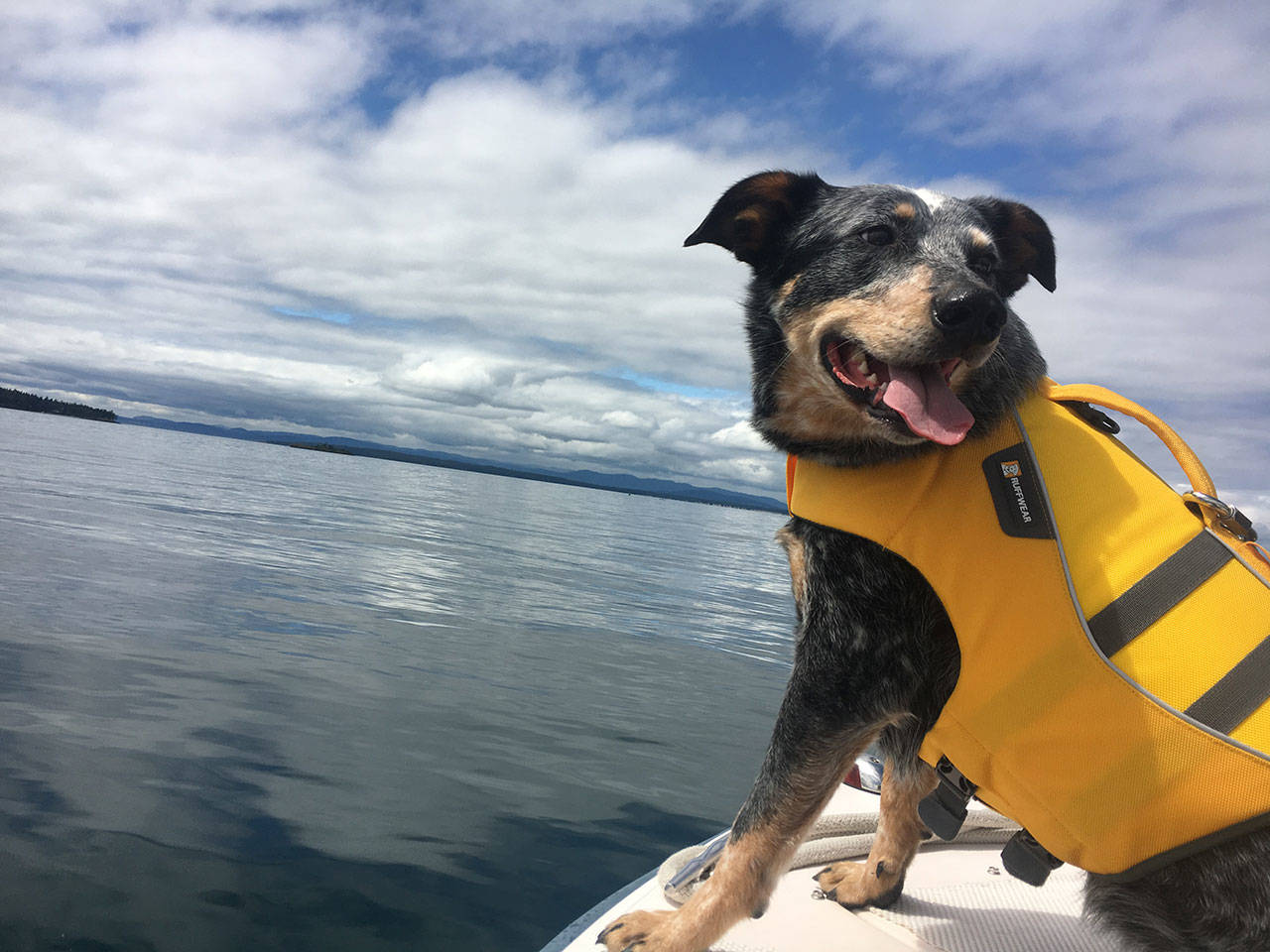After years of diligently assisting researchers collect orca poop, 13-year-old Tucker, the infamous black lab, has been given a well-deserved retirement. He is now free to spend the rest of his days chasing balls.
“Tucker worked a little earlier this year to help train me on the project, but once that training was over he was all done,” said Collette Yee, field research scientist at Conservation Canines. Jack, a 5-year-old Australian Cattle dog mix, will take over Tucker’s job next season.
Conservation Canines is a program of the University of Washington’s Center for Conservation Biology, directed by Samuel Wasser, that researches animals and their habitat by utilizing the keen canine nose to collect scat or poop. Researchers are able to glean incredible amounts of information, called fecal data, about the state of the creature’s health. Besides studying the local killer whales, Conservation Canines works around the world. One project involved studying the impacts of poaching on elephants.
Training these amazing dogs begins with a ball.
“We select dogs with a high ball drive and a need for an outlet for their excessive energy. We look for dogs who will search all day for their ball,” Yee explained. Many of these dogs, according to their bios on Conservation Canine’s website, are adopted from animal shelters. Once the pups understand the game of searching, training them with new scents goes quickly. Some dogs are able to be put straight to work. Much of the training she adds is actually focused on the handler.
“Handlers are trained to listen to the dogs, and learn to communicate with them,” she said. Heath Smith, Conservation Canine program coordinator creates the assignments, taking into consideration the environment, the dog’s physical traits such as size, coat, stamina, and their ability to work certain terrains.
Tucker was adopted into the canine crew in 2006. Trained to find Wolverine, moose, gray wolf, arboreal iguana, as well as orca scat, he fit in nicely to the Southern resident orca project. Thanks to Tucker, researchers have gained important insights into the health of these whales. The findings, Yee explained includes toxins that would not be found at such high levels if Chinook were more available.
“We know that if the whales were at a healthy weight we wouldn’t be seeing such high levels of toxins in their fecal matter,” Yee said, adding that these poisons are stored in blubber, and when the whales don’t eat enough, the effect of toxins increases.
Researchers have delved into how these toxins affect orcas in the paper, “Population growth is limited by nutritional impacts on pregnancy success in endangered Southern resident killer whales (Orcinus orca).”
“Lack of prey, increased toxins, and vessel disturbance have been listed as potential causes of the whale’s decline, but partitioning these pressures has been difficult,” the document states, explaining they were able to analyze hormones in orca feces collected by using detection dogs.
“Population growth” continues, explaining that by analyzing the orca’s thyroid and glucocorticoid hormone metabolites in their scat, scientists were able to assess the animals pregnancy, miscarriages, and determine how lack of food and other stresses impacted pregnancies. Between 2008 and 2014 approximately two-thirds of their detectable pregnancies were unsuccessful, and low availability of Chinook is a significant cause of late pregnancy failure. The lack of births amongst the Southern residents is alarming, Yee said. Fecal data shows the rate which miscarriages are occurring in their population, a trend signaling a major concern for orcas’ future.
The study is far from over. Jack will continue Tucker’s legacy, and given his impressive resume at Conservation Canines, he is qualified for the job. Jack is trained to sniff out scat of wolverines, and Townsend’s long-eared bats. In hopes of expanding the project, Jack will be occasionally joined by Dio, another 5-year-old Australian cattle dog mix. Dio’s specialties include wolverine fecal finding, as well bat and bird carcass scouting.
“It amazes me what these dogs can do,” said Yee. “The fact that they can pinpoint a sample as small as a quarter from over a kilometer away in the open ocean is incredible. There seem to be very few things these dogs can’t find.”
For more information, visit conservationbiology.uw.edu/conservation-canines. Read “Population growth is limited by nutritional impacts on pregnancy success in endangered Southern residents,” below.



